It’s monday of the week preceding Easter. Near Saint Lazarus church, several men and boys dressed in black tunics with white cloaks with a red symbol talk while preparing themselves for the procession. They are part of Hermandad de Jesús en su Tercera Caída, one of the brotherhoods that make up the Holy Week tradition in Zamora, a city from northern Spain, near the border with Portugal.



This is a tradition dating more than seven hundred years. The first records of the celebration of the Passion of Christ in Zamora date to 1279, even though the first brotherhood was only created in 1412. Since then these groups of men (initially) and women (more recently) have multiplied, until the creation of Cofradía Virgen de La Esperanza, the most recent one, in 2010.

The beginning of the procession approaches. Families and friends join together, to drink a few cups, and chat away, in café Nirvana, a meeting point on the other side of the street, with a name that reminds of religions other than Catholic.
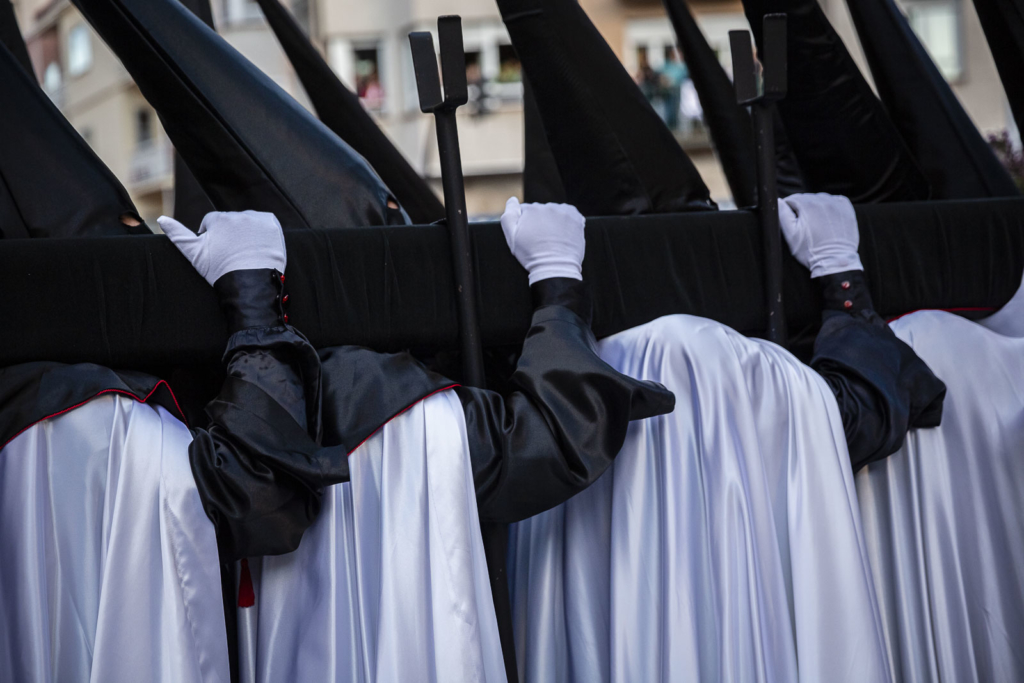
Around 20:30 the pasos start leaving the church. Huge floats made of wood that illustrate episodes of the Passion of Christ, carried by the cargadores. Meanwhile, the two thousand members of the brotherhood have already put on their black caperuzes, the pointy conical hats that are so characteristic of the Easter celebrations in Spain.


Not all the brotherhoods and guilds use the same clothes. Most use tunics and caperuzes of different colors (depending on the brotherhood), but there are also some that just use Franciscan tunics, or Alistana capes (brown hooded woolen capes , with motifs embroidered in black, very similar to the traditional Capas de Honra in Portugal).







This is just the first procession of the day. During the night there will still be another one, from Hermandad Penitencial del Santísimo Cristo de la Buena Muerte. These night-time processions, that usually start around midnight, are the penitential processions. They are never cancelled regardless of the weather. Due to its nature, they are more silent. Street lamps go out and the only source of light comes from the candles carried by the penitents. Some of these have the responsibility to light the candles of their brothers, so it’s common to see wax dripping from their hands.









Celebrations begin in Passion Thursday (the thursday before the holy week), and continue through the following week until Easter Sunday. All the 18 groups have the opportunity to go in their own procession, each following their own route, through the medieval streets of the city, or through the bridge that crosses the Duero river (or Douro, in Portuguese). Some of these processions bring more than 5000 people together, some start at 5 o’clock in the morning, and can last for 5 or 6 hours.





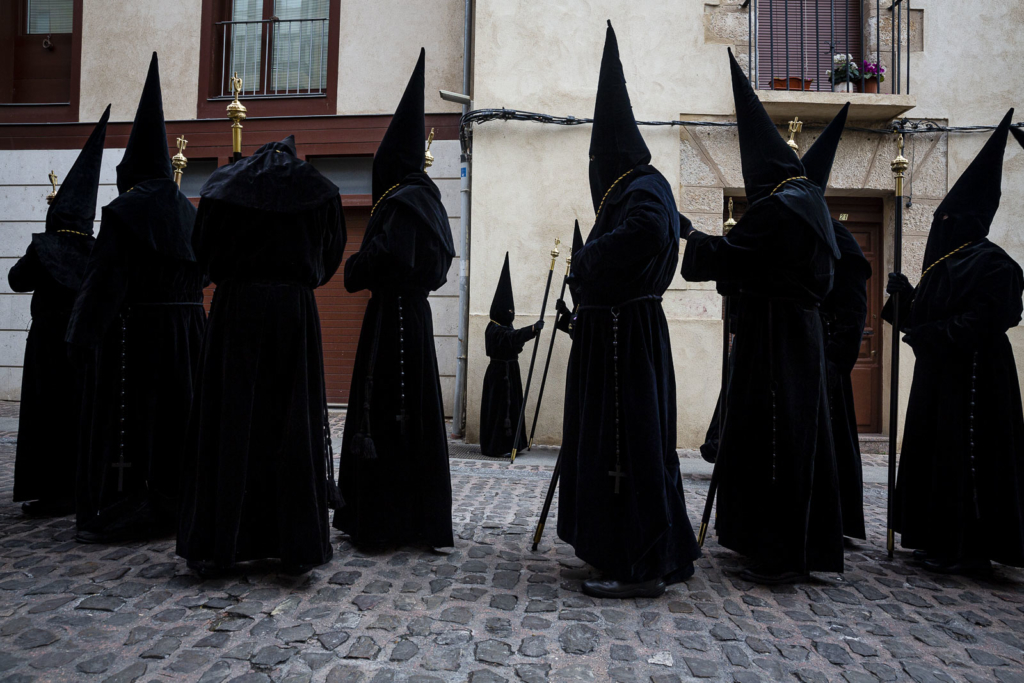

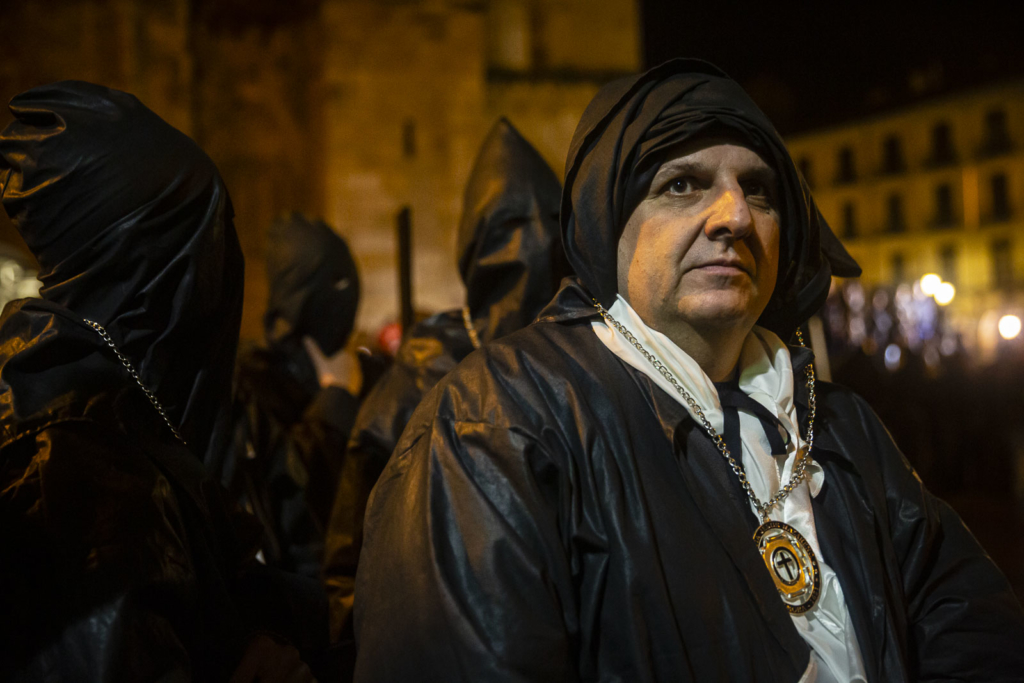
Regardless of the brotherhood, the ritual is always the same. About an hour before the procession, groups of friends or entire families, children included, come together, all dressed-up to the occasion, in the cafes and restaurants. They eat, drink, talk and enjoy themselves. They then leave in the procession, to be seen by thousands of people. When the procession ends, they come together again in restaurants for a quick tapa, or go back to their homes in the case of night-time processions.
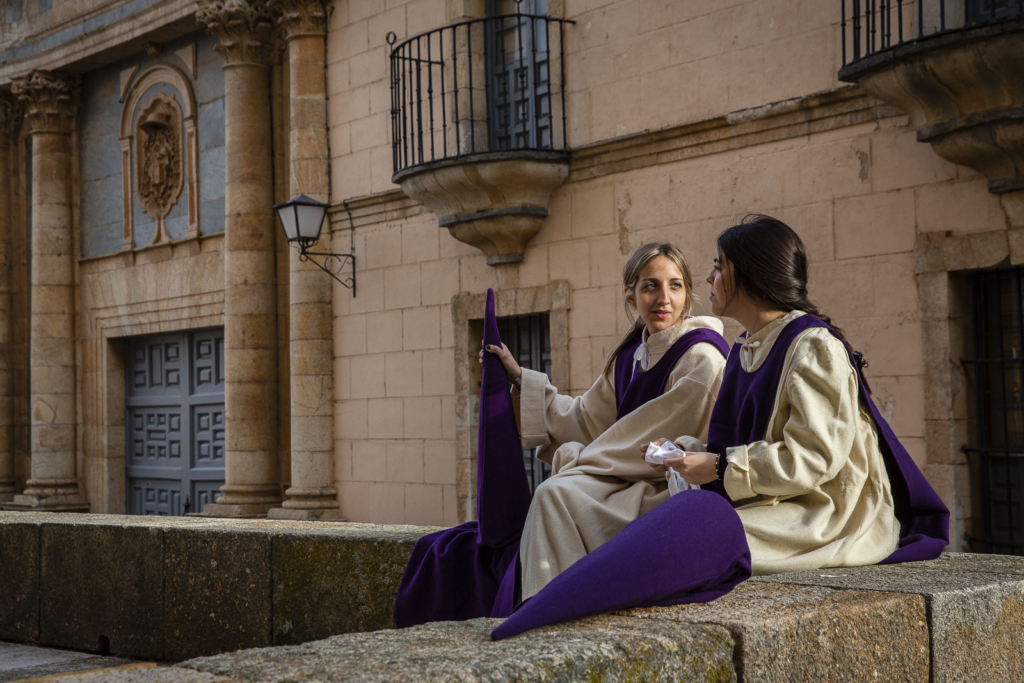




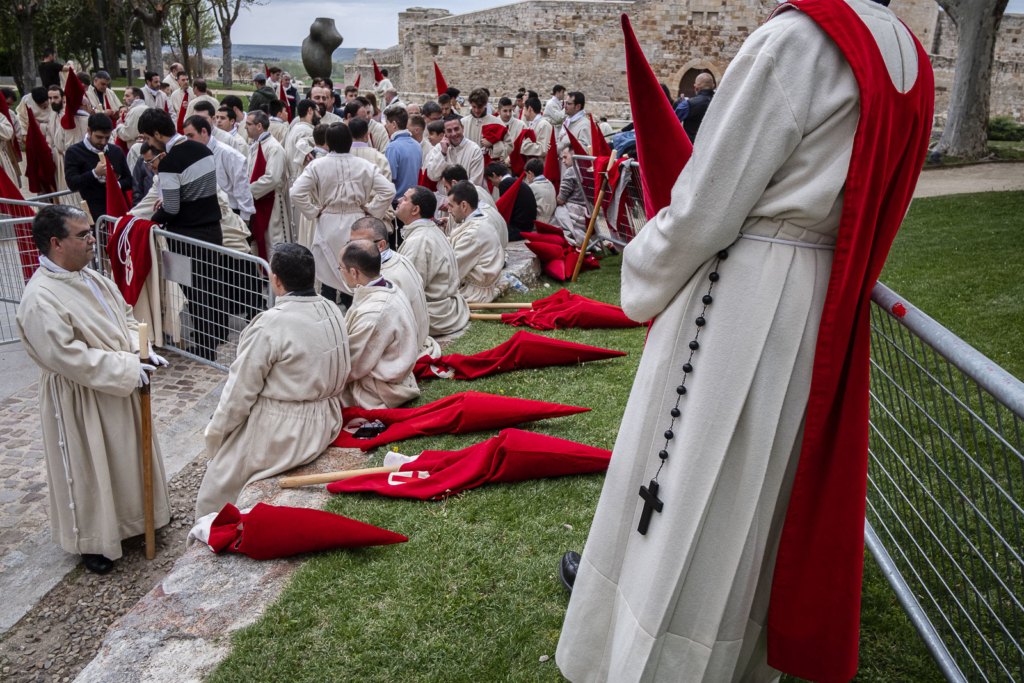



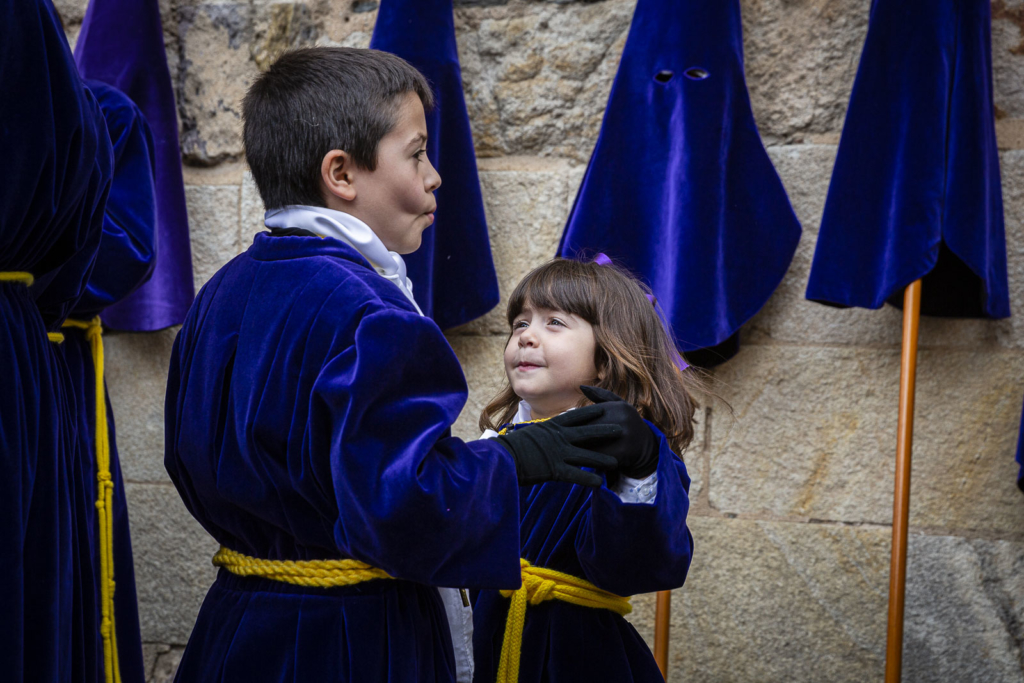
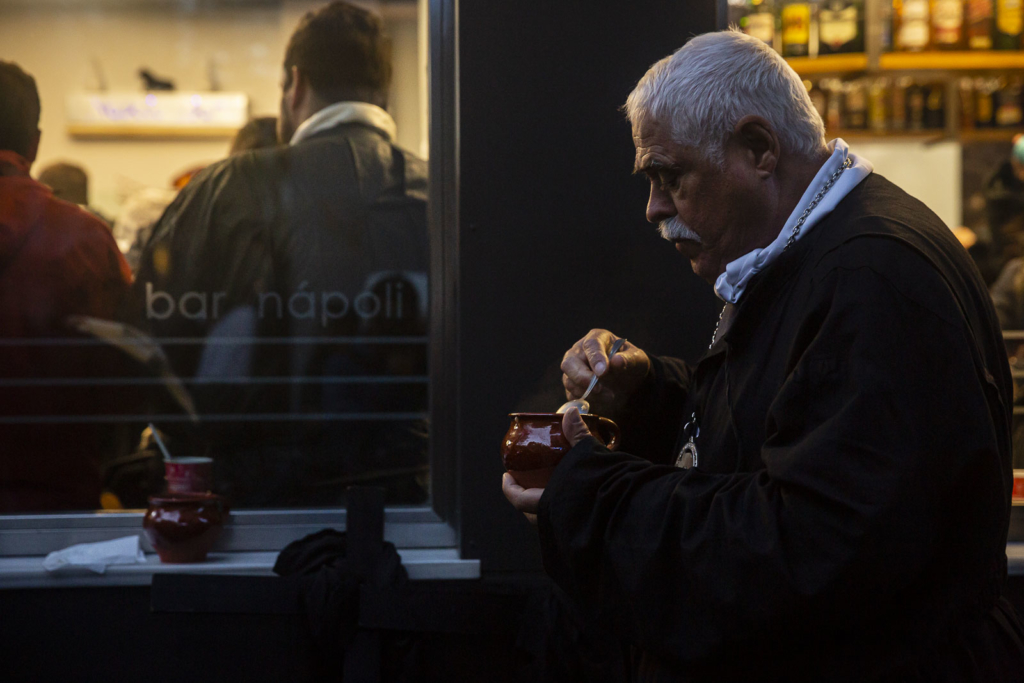

Catholic faith, that throughout History has been both the target and origin of several persecutions and polemic, is here used as a way to bring together people from all parts of Spain and the world, in a celebration of Joy.

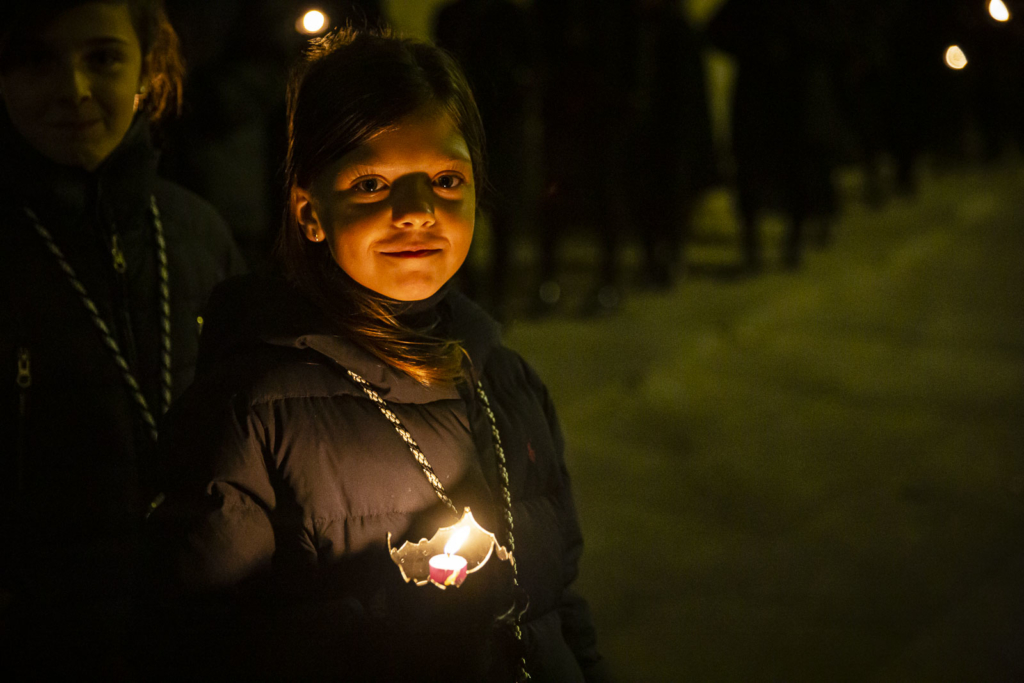


List of Brotherhoods photographed for this article:
Hermandad de Jesús en su Tercera Caída
Hermandad Penitencial del Santísimo Cristo de la Buena Muerte
Cofradía de Jesús del Vía Crucis
Real Hermandad del Santísimo Cristo de las Injurias “Cofradía del Silencio”
Hermandad Penitencial del Santísimo Cristo del Amparo “Capas Pardas”
Cofradía Virgen de la Esperanza
Cofradía de la Santa Vera Cruz, Disciplina y Penitencia
Penitente Hermandad de Jesús Yacente
Cofradía de Jesús Nazareno
Real Cofradía del Santo Entierro
Cofradía de Nuestra Madre de las Angustias

